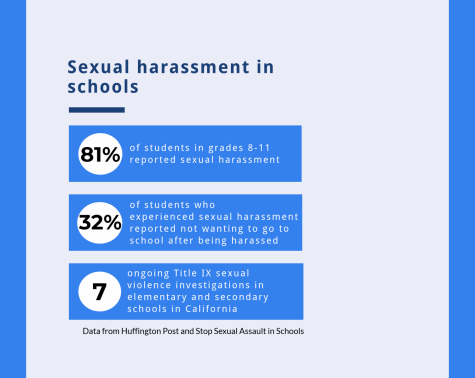Over the past few weeks, teachers of the English department instructed classes about sexual harassment in a continuance of a program established last year. The presentations, provided by the Wellness Center, consisted of 36 Google Slides that opened with a discussion of the #MeToo movement. From there, the training focused on defining and explaining sexual harassment, also exploring sexting, sexual assault and sexual misconduct. The presentation included definitions and explanations of legal repercussions, as well as “extension” activities such as case studies and discussions.
Jessica Colvin, the Wellness Director, created the workshop last year. Much of the content is mandated, but she says the inclusion of the extension activities was an effort to engage students beyond the requirements.
“We want to make sure that everyone on our campuses has the same education about sexual harassment and what it is, how it impacts others and how it will be handled on a school campus,” Colvin said.
The district’s reaction to sexual assault allegations last year has been noted for thoroughly implementing a comprehensive training by news sources such as NBC Bay Area. However, minimal updates from last year’s presentation left some students questioning the value of repeating a lesson. Junior Lindsay Dubin, who participated in the workshop last year in Advanced Placement (AP) European History and this year in AP Language and Composition, was frustrated by its redundant nature.
“It was the exact same presentation I had last year, which I think is [a] big issue; it needs to adapt each year,” Dubin said.
Despite criticism of its repetitiveness, the requirements impose limitations on the amount of content that can be changed, according to Colvin. She does update it by including new activities or discussions based on news events or politics, but is constrained by the already-comprehensive nature of the workshop, not wanting to add onto a workshop already expected to take 90 minutes.
“Sexual harassment continues to change and evolve, but the definitions stay the same. This is a changeable document, it is not stagnant and it has to change as times change,” Colvin said. “It has to stay relevant and up to date.”
Dubin’s teacher, Fiona Allan, wasn’t aware that she was giving the same presentation as last year, but she said the message is still important.

“Even though some of the material may be dated, the message is not,” Allan said.
According to Dubin, the topics themselves, besides being a repeat of last year, were not as relevant to upperclassmen. She would have liked more student input in developing the workshop, as subjects such as intoxication and sexual assault were minimally covered, she said. However, the district collects feedback from students and teachers after they conduct the workshops, according to Colvin.
“I think it was out of focus, and they said they did a lot of research into what needs to be focused on, but I think they should really talk to students about what they believe needs to be taught,” Dubin said. “The bigger issue is the use of drugs and alcohol … and what the consequences of that are.”
Similar frustrations stemmed from perceived inconsistencies between teachers both last year and this year in terms of engagement and thoroughness, according to Dubin.
“It really varies from teacher to teacher. Last year it was a complete joke; the teachers didn’t really care about it and just recited off the script they were given,” Dubin said.
Although Colvin administers a teacher training in order to instruct the staff on how to present the workshop, she is aware that some teachers may choose to not explore the material beyond basic requirements.
“It could either be a lecture-type presentation, or if the teacher does the discussions and extension activities, it could be a more engaging workshop,” Colvin said.
Additionally, some students didn’t experience the workshops last year, raising questions of whether the workshop is being implemented equally.
“Some people in the class had it the year before, and it was exactly the same. The other half said they didn’t have it at all, that it was all new,” Allan said.
The prevalence of incidents relating to sexual harassment among young people demonstrates the need for the most effective training possible, according to Dubin.
“Students obviously aren’t getting the message that sexual assault and harassment aren’t okay under any circumstances,” Dubin said.







